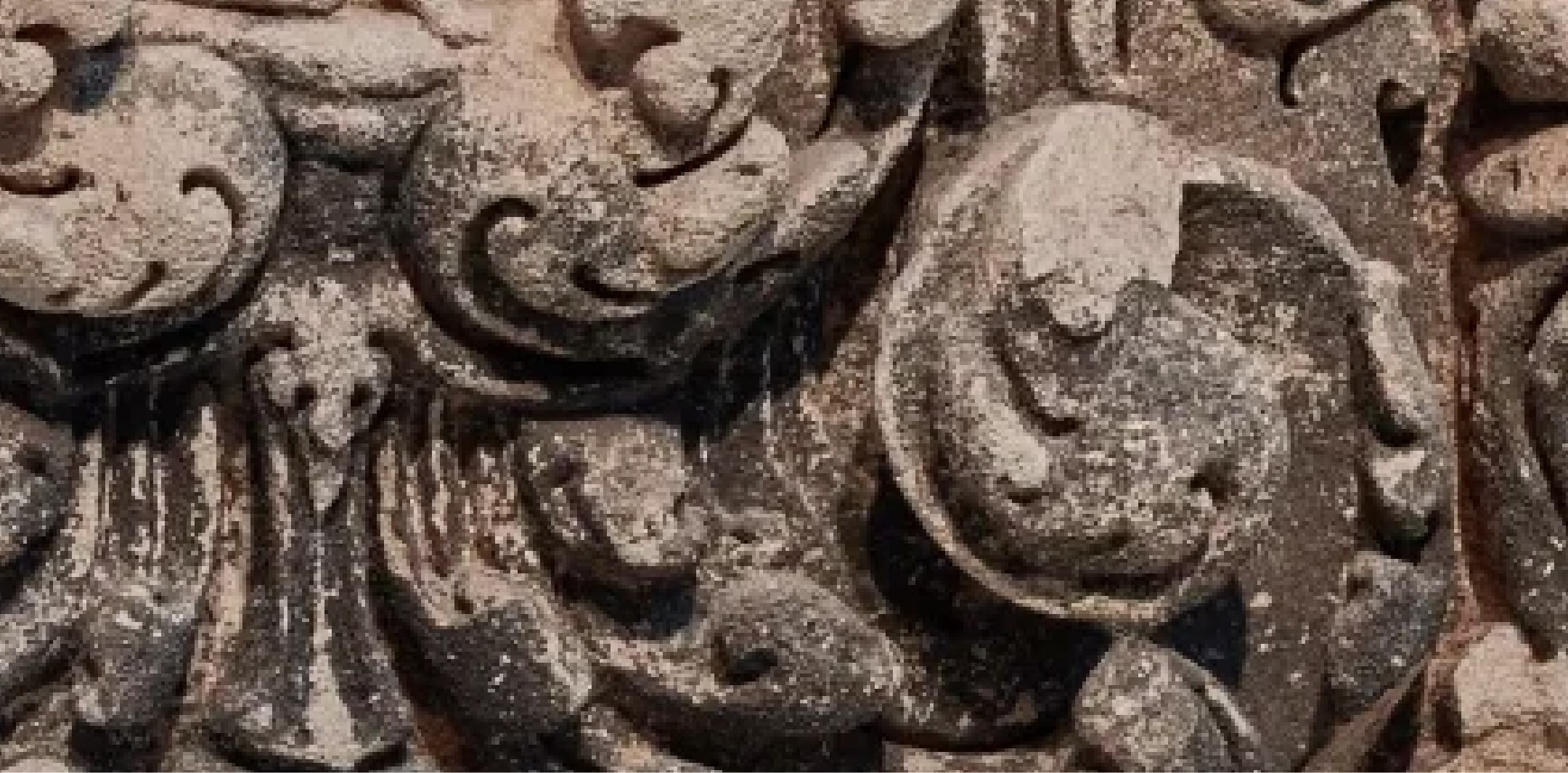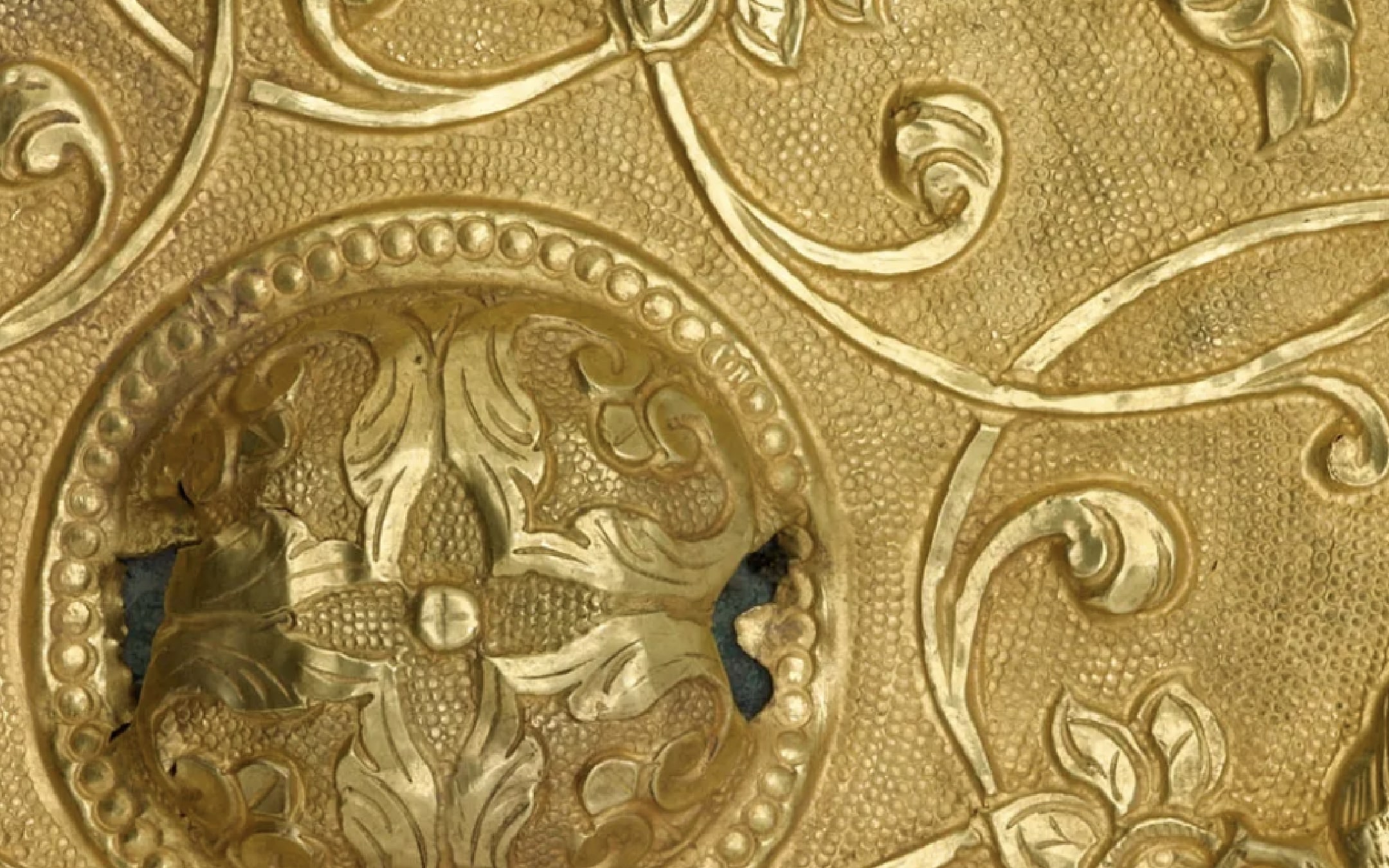Pendant in the form of a quadruped

Terms of Use
Usage Conditions ApplyAt A Glance
-
Period
ca. 1100-ca. 1000 BCE -
Geography
China -
Material
Jade (nephrite) with traces of cinnabar -
Dimension
H x W x D: 2.7 x 3.9 x 1.4 cm (1 1/16 x 1 9/16 x 9/16 in) -
Accession Number
S1987.695 -
EDAN ID
edanmdm:fsg_S1987.695
Object Details
-
Description
Pendant, animal (ram, dog, or buffalo?); carved in the round; pierced in chest; opaque cream. (Totally calcified; surface worn; mostly covered with cinnabar deposits; some repair to legs, backside.) -
Provenance
As early as 1928Likely discovered at archeological sites in Loyang, Honan Province, China [1]To 1948Zhang Naiji (1899–1948), Shanghai, China then New York, NY [2]1948 to early 1950sZhang Mei Chien (1901–c.1955), New York, NY inherited upon her husband’s death [3]Around 1954 to 1961C. T. Loo Chinese Art, New York, NY likely purchased from Zhang Mei Chien in New York, NY [4]1961 to 1964Frank Caro Chinese Art, New York, NY, mode of acquisition unknown [5]1964 to 1987Dr. Arthur M. Sackler, New York, NY purchase from Frank Caro Chinese Art on August 27, 1964 in New York, NY [6]From 1987Arthur M. Sackler Gallery, gift of Dr. Arthur M. Sackler on September 11, 1987 [7]Notes:[1] Object published in Archaic Chinese Jades: Special Exhibition (Philadelphia: The University Museum, February 1940), cat. 99. Catalogue entry notes discovery site. Excavations at Anyang began in 1928.[2] Zhang Naiji (also known as N.C. Chang) was a businessman, born to a prestigious family in Zhejiang that made their wealth in the silk and salt industries. He collected ancient Chinese art objects and Chinese coins. Zhang amassed his collection whilst living in Shanghai, before leaving for America in 1938, and acquired his objects onsite of archeological excavations (see: Alfred Salmony, Chinese Jade through the Wei Dynasty. New York: The Ronald Press Company, 1963: 115.).Zhang lent his collection anonymously to Archaic Chinese Jades: Special Exhibition. We know his identity through letters housed in the Department of Archives, The University of Pennsylvania Museum of Archeology and Anthropology, Philadelphia, Pennsylvania (see: letter, C. T. Loo to Horace Jayne, 25 October 1939 and letter, from C. T. Loo to Horace Jayne, 16 December 1939), copies in F|S COM provenance files. The exhibition was entirely organized by C. T. Loo & Company, New York. Letters exchanged between C. T. Loo and the director of The University Museum, Mr. Horace H.F. Jayne, reveal that Zhang Naiji owned the objects and C. T. Loo & Company had the collection on consignment (see: letter, from C. T. Loo to Horace Jayne, 28 May 1939 and letter, from C. T. Loo to Horace Jayne, 23 October 1940, copies on COM provenance files). C. T. Loo & Company kept the jade collection on consignment from 1940 through Zhang’s death in 1948, inventorying the pieces with a prefix “J” and labeling each item as “Chang Collection.”[3] Zhang Mei Chien, Zhang Naiji’s wife, assumed ownership upon his death in 1948. She sold several pieces from her husband’s collection to C. T. Loo & Company and J. T. Tai & Company. She sold several pieces to J. T. Tai & Company in July 1954. It is unclear when C. T. Loo Chinese Art purchased items from Zhang Mei Chien.[4] On September 1, 1952, C. T. Loo’s associate, Frank Caro (1904-1980) took over daily operations of the New York business, operating at C. T. Loo Chinese Art. Loo continued to play a large role in the business, as he and Caro struck a deal in which profits made on Loo’s stock would be evenly divided and Loo would maintain the lease and rental payments on the company’s gallery space.C. T. Loo Chinese Art kept the same stock number that C. T. Loo & Company assigned it when consigning for Zhang Naiji. This object could be item J-91, listed on the invoice from Frank Caro Chinese Art to Dr. Arthur M. Sackler, August 27, 1964 – “Archaic jade figure in round of baby water buffalo translucent Western Chou. Lt: 1- ¼ ins (Chang Coll).” Copy in object file.[5] In 1961, Loo and Caro’s agreement ended. C. T. Loo & Cie., Paris, France took control of C. T. Loo Chinese Art, New York’s stock that C. T. Loo had added to the inventory before his death in 1957. Frank Caro then opened Frank Caro Chinese Art. Caro acquired pieces from Loo’s original stock (the mode of acquisition is unknown). See invoice referenced in note 4.[6] Pursuant to the agreement between Dr. Arthur M. Sackler and the Smithsonian Institution dated July 28, 1982, legal title of the donated objects was transferred to the Arthur M. Sackler Gallery of September 11, 1987. -
Collection
Arthur M. Sackler Collection -
Exhibition History
Archaic Chinese Jades, Special Exhibition (February 1940) -
Previous custodian or owner
Zhang Naiji 張乃驥 (1899-1948)Zhang Mei Chien (1900-1998)C.T. Loo Chinese Art (1953-1961)Frank Caro Chinese Art (1962-1980)Dr. Arthur M. Sackler (1913-1987) -
Origin
China -
Credit Line
Gift of Arthur M. Sackler -
Type
Jewelry and Ornament -
Restrictions and Rights
Usage Conditions Apply
There are restrictions for re-using this media. For more information, visit the Smithsonian's Terms of Use page.
The information presented on this website may be revised and updated at any time as ongoing research progresses or as otherwise warranted. Pending any such revisions and updates, information on this site may be incomplete or inaccurate or may contain typographical errors. Neither the Smithsonian nor its regents, officers, employees, or agents make any representations about the accuracy, reliability, completeness, or timeliness of the information on the site. Use this site and the information provided on it subject to your own judgment. The National Museum of Asian Art welcomes information that would augment or clarify the ownership history of objects in their collections.
Keep Exploring
-
Related Resources
-
Date
-
Name
-
Place
-
Topic
-
Culture
-
Object Type

